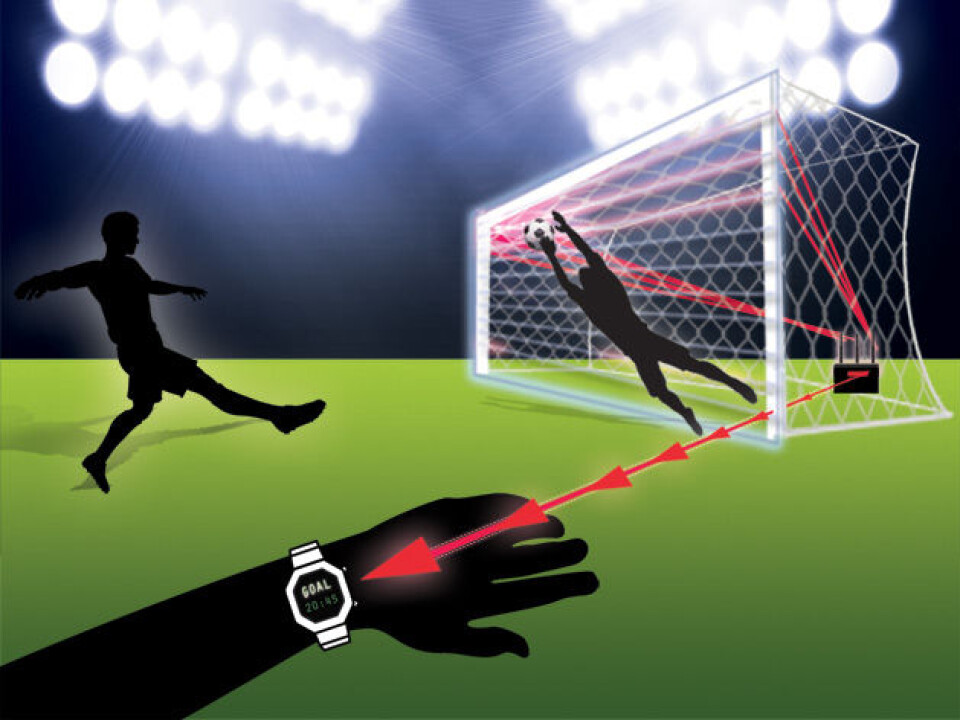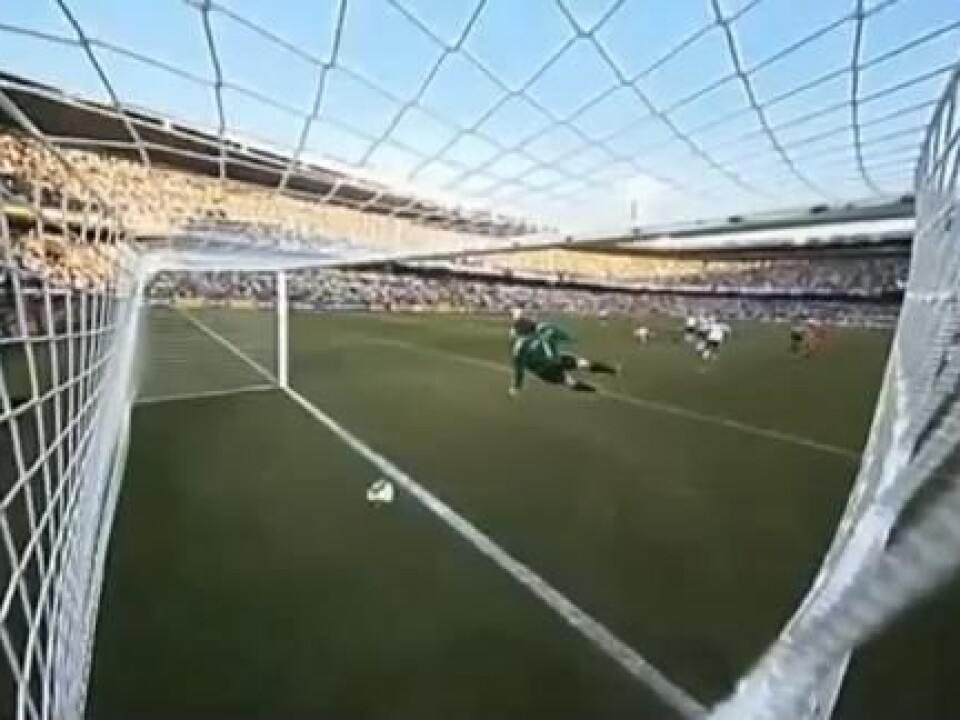
The ball tells you when it’s in
New Danish/German goal-line technology has been approved by FIFA and will be tested in this week’s FIFA Club World Cup.
The days of heated arguments about a referee’s bad judgement may soon be over.
Future football games are likely to be played with goal-line technology which can tell the referee whether the ball is inside the goal line or not.
The Danish company Select has developed a ball that’s fitted with the so-called GoalRef technology, which consists of a chip that tells the referee whether the ball is in or not.
The ball and the technology have been approved by FIFA for use in matches in the 2012 FIFA Club World Cup, due to start on Thursday.

The iBall, short for 'intelligent ball', is produced by Select, while the technology is developed in collaboration between the national German research organisation Fraunhofer and the Danish company GoalRef. They were helped along from the Alexandra Institute and Aarhus University’s Department of Computer Science.
How the intelligent football works
The ball is fitted with three flexible copper coils, which cover all parts of the ball. In this way, the ball can tell the referee whether or not it’s in, regardless of which way it’s turning.
A low-frequency magnetic field is generated around the goal, which is monitored by ten plastic-coated antennas installed in the goal posts and crossbar.
The moment the ball passes through this magnetic field, the copper wires will create a change in this magnetic field.

This change is analysed by a computing device which can also detect whether the entire ball has crossed the goal line. If it has, the computer sends out an encrypted signal to the referee’s wristwatch, so that he – and only he – can see if it’s a goal or not.
The final decision will still be made by the referee.
It’s been a challenge for Select to create a ball with a network of copper coils, which does not affect the way the ball moves and which can also withstand being kicked around by professional footballers.
The iBall is nearly flawless
The new ball has been tested in numerous football scenarios, including matches in the Danish Superliga.
According to Peter Knap, the managing director of Select, the system is close to 100 percent reliable.
”Mistakes occur in all of technology. But our ball has passed the FIFA tests, so it’s at least as reliable as it can get,” he says.
Thomas Pellkofer, of Fraunhofer, agrees that the product complies with all the FIFA specifications:
“It’s been tested in all conceivable scenarios, including common ones such as when the ball being kicked into a corner of the goal and when many players are around the ball. They also test unlikely scenarios, such as how well the system works when there is snow on the pitch or if it’s covered in smoke from fireworks.”
Goal-line technology ready to use
Goal-line technology has caused debate all the way up to the very top of the football world. But a series of incidents in the past few years have highlighted the need for this technology and in the end a majority was found in favour of it.
To date, one other goal line technology system has been approved. It’s called Hawk-Eye and is based on high-speed cameras.
FIFA is not planning to find a single system that can be used everywhere. Rather, it aims to approve and grant licenses to an unspecified number of systems that prove sufficiently reliable to be used in leagues and tournaments.
In addition to Thursday's 2012 FIFA Club World Cup, goal-line technology is also scheduled to be used at the Confederations Cup and the 2014 World Cup.
FIFA has given the green light for both of these goal-line technologies to be tested at these tournaments.
Goal-line technology could protect fans
Whether the ball is in or not is often a question of millimetres – and this can cause all sorts of fights between fans, players and coaches.
Regardless of what goal-line technology is being used, it will have an effect on the fans, says Jonas Havelund, who researches into fan culture at the Department of Public Health – Sports Science at Aarhus University:
“I’m convinced that the introduction of this technology will make things a lot less frustrating for fans and the clubs – provided that it’s flawless,” he says.
“Sometimes large sums and intense emotions are at stake in these matches, so it’s obviously frustrating to be cheated because of a human error.”
------------------------------------
Read the Danish version of this article at videnskab.dk
Translated by: Dann Vinther






